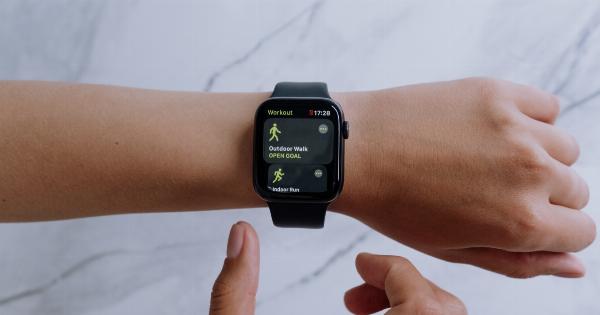With advancements in technology, the landscape of health insurance and healthcare delivery system has undergone significant changes.
The integration of technology has revolutionized the way healthcare services are provided, making them more efficient, accessible, and patient-centric. This article explores the various technology-driven changes that have transformed the health insurance and healthcare delivery system.
Telehealth and Telemedicine
One of the most significant advancements in healthcare delivery is the emergence of telehealth and telemedicine. Telehealth involves the use of telecommunications and digital technology to deliver healthcare services remotely.
Patients can now consult with healthcare professionals through virtual appointments, reducing the need for in-person visits. Telemedicine has played a crucial role in expanding access to healthcare, especially in rural areas where there is a shortage of healthcare providers.
Electronic Health Records (EHRs)
Electronic Health Records (EHRs) have replaced traditional paper-based records, transforming the way patient information is stored and shared.
EHRs provide a comprehensive and digitized view of a patient’s medical history, enabling healthcare providers to make informed decisions and coordinate care effectively. EHRs also facilitate secure sharing of patient data across different healthcare systems, improving continuity of care.
Big Data and Analytics
The healthcare industry generates massive amounts of data, including patient records, medical imaging, research studies, and more.
Big data and analytics have emerged as essential tools in analyzing and extracting meaningful insights from this vast amount of information. Advanced analytics algorithms can detect patterns, predict outcomes, and identify potential health risks, enabling healthcare providers to make data-driven decisions and deliver personalized care.
Artificial Intelligence (AI) in Healthcare
Artificial Intelligence (AI) has significantly impacted the healthcare industry by automating various tasks, enhancing diagnostics, and improving patient outcomes.
AI algorithms can process and analyze large volumes of medical data, aiding in the early detection of diseases and identifying optimal treatment plans. AI-powered chatbots and virtual assistants can provide patients with immediate responses and assist healthcare professionals in administrative tasks, reducing the burden on healthcare systems.
Internet of Things (IoT)
The Internet of Things (IoT) has transformed healthcare delivery by connecting various devices and systems, enabling seamless data exchange and remote monitoring.
IoT devices such as wearables, smart sensors, and remote monitoring tools can collect real-time patient data, allowing healthcare providers to monitor patients’ health conditions continuously. This data-driven approach facilitates timely interventions, reduces hospital readmissions, and improves overall patient outcomes.
Precision Medicine
Advancements in genomic research and technology have paved the way for precision medicine. Precision medicine involves tailoring medical treatments to individual characteristics, including genetic makeup, lifestyle, and environmental factors.
Through genomic sequencing and analysis, healthcare providers can identify specific markers related to diseases and develop personalized treatment plans. Precision medicine holds the potential to improve treatment efficacy, reduce adverse reactions, and enhance patient outcomes.
Blockchain in Healthcare
Blockchain technology has the potential to revolutionize healthcare by providing a secure and decentralized platform for storing and sharing patient data.
Blockchain’s distributed ledger can ensure the integrity and privacy of medical records while allowing seamless access to authorized healthcare providers. It can also streamline insurance claims processing, reduce fraudulent activities, and enable efficient healthcare supply chain management.
Robotics and Automation
Robotics and automation technologies have made significant strides in healthcare, assisting in surgeries, medication administration, and rehabilitation.
Robotic-assisted surgeries offer enhanced precision and fewer complications, leading to better patient outcomes. Automation of administrative tasks, such as appointment scheduling and medical billing, can free up healthcare professionals’ time, allowing them to focus more on patient care.
Virtual Reality (VR) and Augmented Reality (AR)
Virtual Reality (VR) and Augmented Reality (AR) are increasingly being utilized in healthcare settings to enhance medical education, training, and patient experiences.
VR simulations enable medical students and professionals to practice complex procedures in a safe and controlled environment. AR can provide real-time information and guidance during surgeries, improving accuracy and reducing risks. In patient care, VR and AR can create immersive and interactive experiences, helping patients manage pain, anxiety, and rehabilitation.
Cybersecurity in Healthcare
As technology becomes more integrated into healthcare, ensuring the security and privacy of patient data becomes paramount. Cybersecurity measures are crucial in safeguarding patient information from data breaches and unauthorized access.
Healthcare providers must implement robust cybersecurity protocols, including encryption, access controls, and regular system audits, to protect sensitive medical data and maintain patient trust.
Conclusion
Technology-driven changes in health insurance and the healthcare delivery system have revolutionized the way healthcare services are provided.
Telehealth, EHRs, big data analytics, AI, IoT, precision medicine, blockchain, robotics, and VR/AR are just some of the advancements that have transformed healthcare delivery. These technologies have improved access to care, enhanced patient outcomes, and empowered healthcare providers with data-driven insights.
However, it is essential to address challenges such as cybersecurity to ensure the safe and secure implementation of these technologies. The future of healthcare holds immense potential with continued advancements in technology.


























